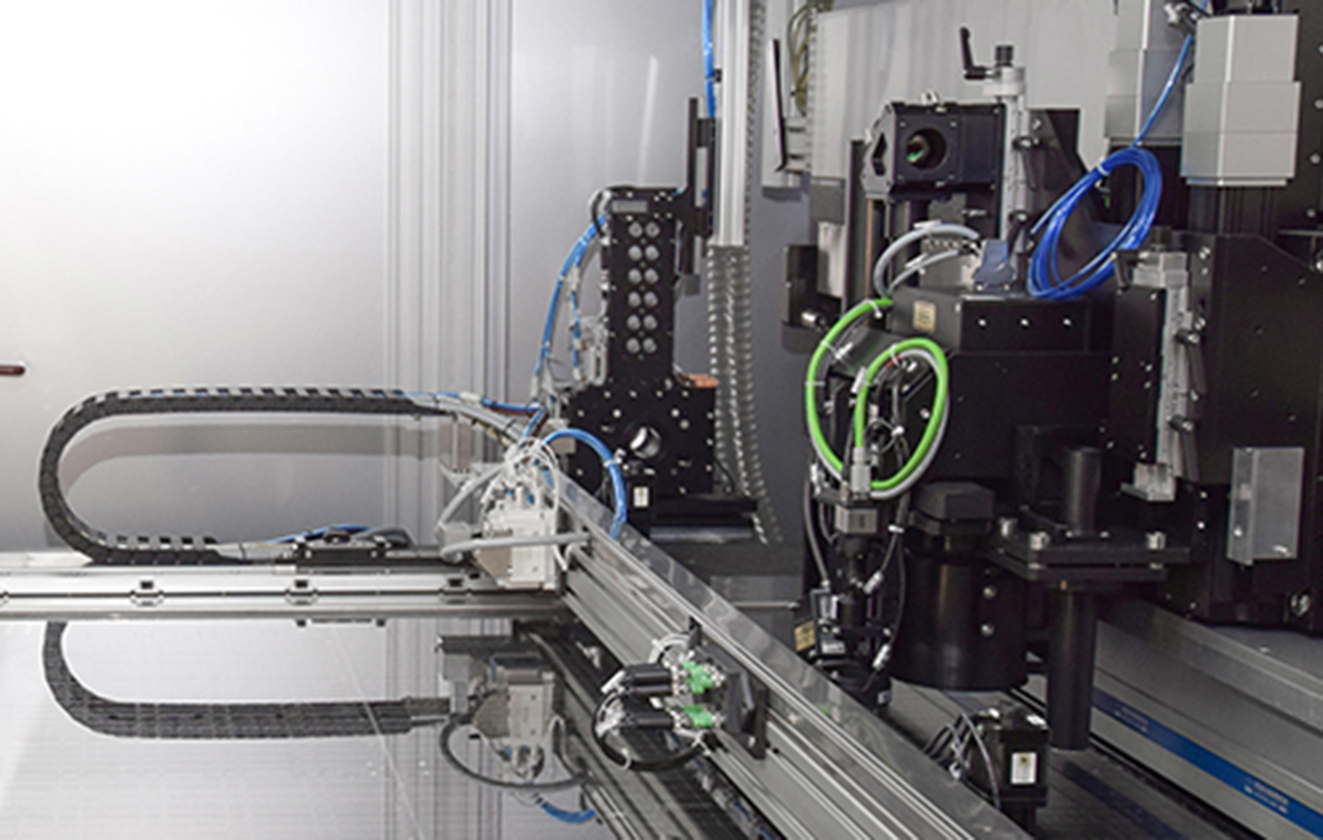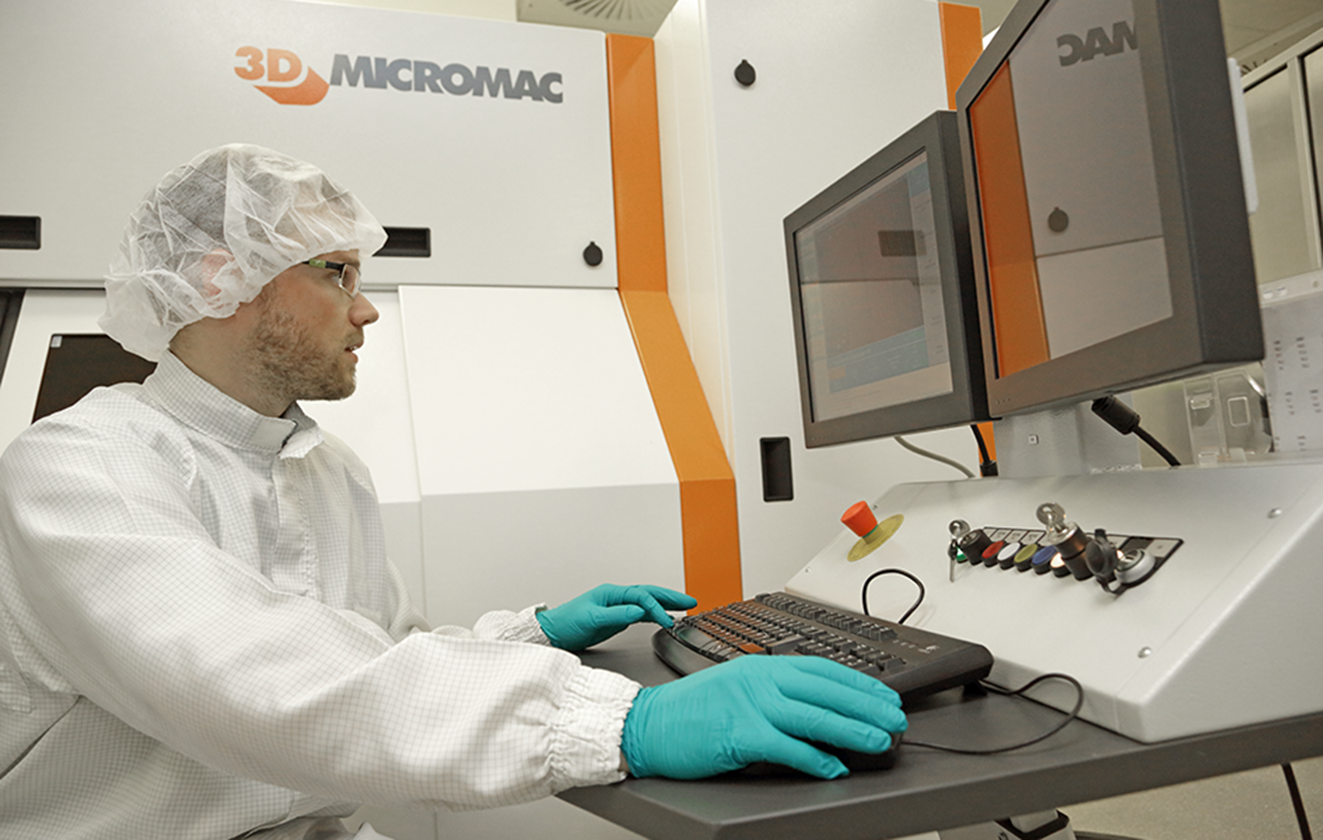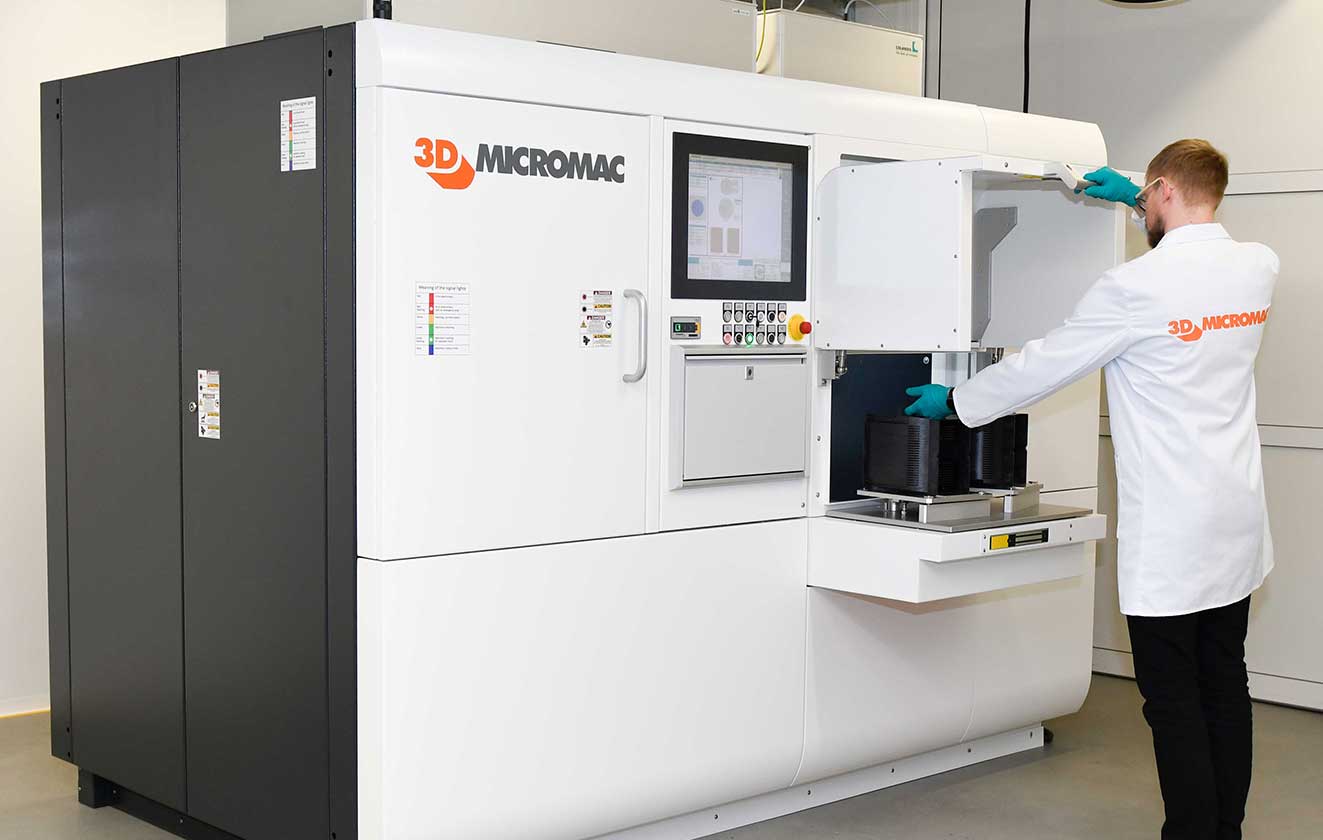Unsere Dienstleistungen für Ihr Produkt
Vertrauen Sie auf mehr als 20 Jahre Erfahrung in der Lasermikrobearbeitung
Die 3D-Micromac AG ist der führende Spezialist für Lasermikrobearbeitung. Wir entwickeln Verfahren, Maschinen und komplette Anlagen auf höchstem technischen und technologischen Niveau. Im Geschäftsbereich der Laser-Lohnfertigung bieten wir die kundenspezifische Entwicklung von Laserprozessen sowie die Lohnfertigung von Bauteilen für Klein- und Großserien an.
Die Fertigung findet dabei ausschließlich auf Lasermaschinen der 3D-Micromac AG statt. Je nach Anforderung stehen dafür in unserem Applikationszentrum industrielle Lasersysteme als auch adaptierbare Entwicklungsanlagen zur Verfügung. In Kombination mit verschiedensten Strahlquellen der führenden Laserhersteller sowie unserem Know-how fertigen wir technisch und qualitativ hochwertige Bauteile. Produktionseffizienz und Kostenbewusstsein stehen dabei an erster Stelle. Gern bieten wir Ihnen Rahmenverträge für Ihre Serienfertigung bei uns an. Soll die Lohnfertigung später in eine eigene Produktion überführt werden, fertigen wir gern die für Ihre Bedürfnisse perfekte Laseranlage.
Laser annealing for setting the magnetic orientation
Programming GMR and TMR magnetic sensors involves setting the magnetic orientation of the reference (fixed) magnetic layer in the desired sensitivity direction. This programming – also known as pinning – can be accomplished by heating the sensor structure above the magnetic blocking temperature of the antiferromagnetic film that is adjacent to and that normally freezes the reference layer magnetization while applying an external magnetic field large enough to saturate the reference layer in the new chosen direction. Upon cooling in the external field, the saturated reference layer becomes fixed, or pinned, in the programmed direction.
The traditional approach has some major disadvantages
Thermal annealing has traditionally been used to achieve pinning. While this approach can enable batch processing of large numbers of wafers simultaneously, a key disadvantage of thermal annealing is the potential for process non-uniformity (temperature or magnetic field conditions) within wafers, or from wafer-to-wafer in batch processing. Another major disadvantage is the difficulty in targeting different parts of the same wafer for different programming conditions, which is necessary to organize two or four separate sensors within a single sensor chip in standard Wheatstone-bridge configurations to boost sensitivity and improve temperature stability. Multiple-die approaches to solve this problem are expensive and difficult to implement accurately, resulting in limited miniaturization, lower performance, and higher cost.
Laser annealing enables the programming of advanced sensors
Selective laser programming of magnetic sensors is a production-approved technology with many advantages. This solution significantly reduces the costs of sensor chip manufacturing by enabling a one-step process. Selective laser pinning is the most efficient technology in terms of cost, throughput, yield, sensitivity, and quality to accurately program magnet sensor devices. It can be programmed for different sensor and wafer designs by recipe. The conversion from GMR to TMR is done only by selecting the correct recipe.




